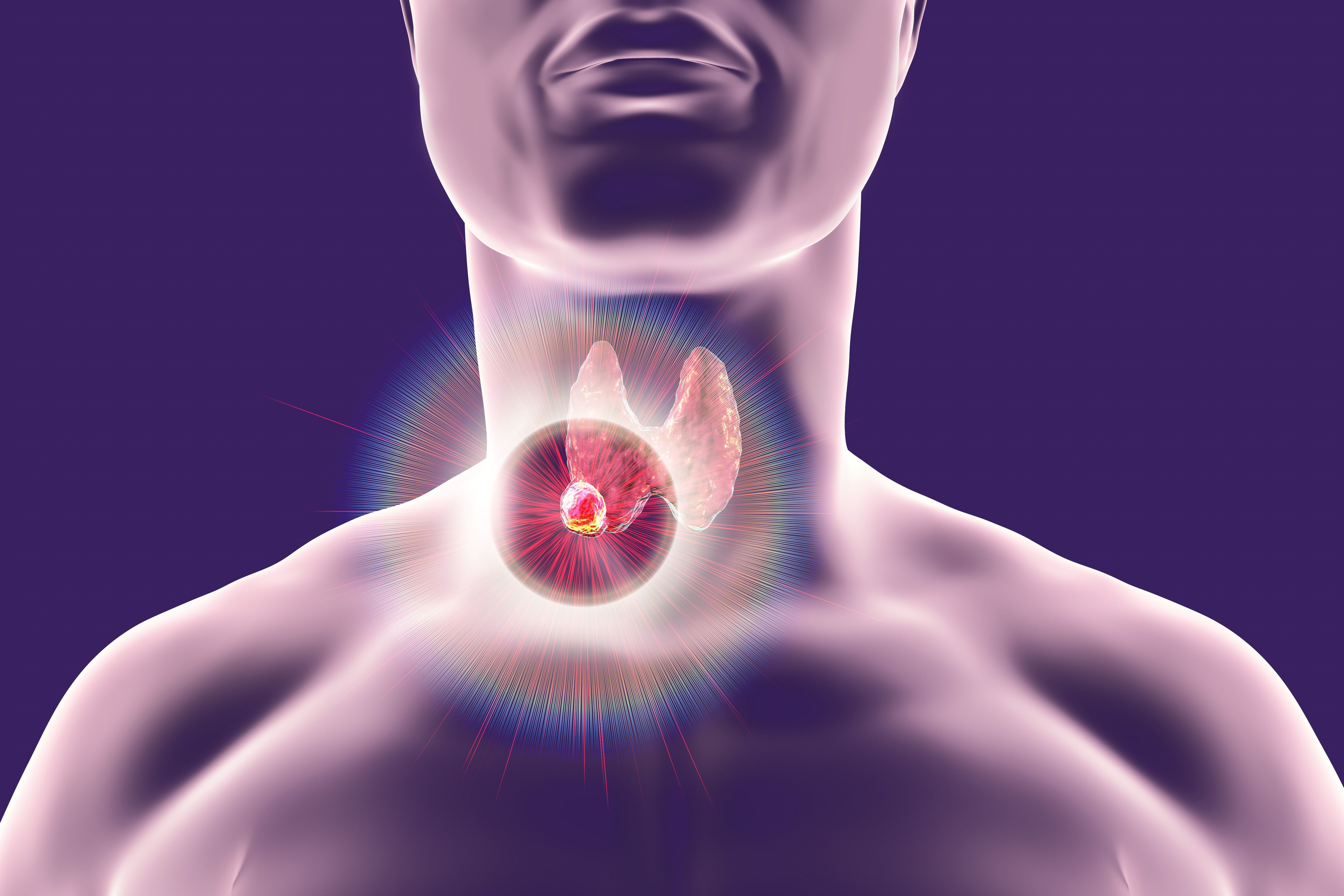Decline in Use of RAI Therapy in Thyroid Cancer Shows Consistency With ATA Guidelines
Continuing to monitor trends will be important in regard to the American Thyroid Association developing other updates to its thyroid cancer treatment guidelines and trends.

The declining use of RAI in management of low-risk adult and pediatric papillary thyroid carcinoma (PTC) between 2000-2018 remains consistent with the American Thyroid Association (ATA) practice guidelines, according to reported data published in Thyroid.
PTC is the most common histological type of thyroid cancer, and due to the overdiagnosis and overtreatment of this disease, the 2009 and 2015 ATA adult guidelines have recommended less extensive surgery and more restricted use of postsurgical radioactive iodine (RAI) in the management of these patients.
The ways to manage PTC, particularly with RAI use, has changed over time and questions surrounding whether trends differ by patient demographics or for larger-sized tumors have yet to be answered. Because of this, researchers used data from 18 surveillance, epidemiology, and end results (SEER) U.S. registries between 2000–2018 to assess trends in the management of localized PTC by tumor size and patient demographics, including age, sex, race/ethnicity, metropolitan versus nonmetropolitan residence, and insurance status.
Experts described time trends in reported first-course treatment which consisted of either total thyroidectomy alone, total thyroidectomy plus RAI, lobectomy, no surgery, or other/unknown, for 105,483 patients with first primary localized PTC without nodal/distant metastases.
Treatment trends for localized PTC were evaluated during the period by tumor size (<1, 1 to < 2, 2 to < 4, and ≥ 4 cm). PTCs categorized as low-risk cases (< 4 cm) were stratified by age at diagnosis (< 20, 20–54, and ≥ 55 years), sex, race/ethnicity including Hispanic (all races) or non-Hispanic White, Black, Asian/Pacific Islander, or Native American/American Indian/Alaska Native, patients' residence at diagnosis, and insurance status.
Due to there being a small number of patients who were Hispanic Black (n = 139), Asian/Pacific Islander (n = 111), or American Indian/Alaska Native (n = 56), Hispanic patients were not subdivided by race/ethnicity. Additionally, pediatric patients were defined as those diagnosed before the age of 20 years and metropolitan counties consisted of those with populations of less than 250,000 individuals.
The treatment trends for subjects with values of age, sex, race/ethnicity, residence, or insurance status that were unknown were not shown.
Of the total of 105,483 patients, the majority (98%, n = 98,880) of PTCs were <4 cm, and 49,131 (50%) were < 1 cm. Eighty percent of patients who were treated with total thyroidectomy plus RAI were female, and 66% were non-Hispanic White. Additionally, 1% were aged 20 years or less, 66% were between the ages of 20–54 years, and 32% ≥ 55 years. Those who resided in metropolitan counties made up 90% of the trial.
Findings showed that for PTCs which were < 4 cm, the use of total thyroidectomy plus RAI slightly increased between 2000 (38%) and 2006 (44%), then declined to 18% in 2018. Total thyroidectomy alone increased from 35% to 54% between 2000–2018, and lobectomy increased from 17% to 24% between 2015–2018. No measurable change in reported treatment modality utilization during the period 2000–2018 occurred for PTCs ≥ 4 cm, and most were managed using total thyroidectomy in addition to RAI (55%) or total thyroidectomy alone (27%).
Treatment patterns in PTCs 2 to < 4 cm were similar with the total thyroidectomy plus RAI having peaked in 2006 (60%), then fell to 23% for 1 to < 2 cm and to 36% for 2 to < 4-cm PTCs. Total thyroidectomy alone increased from 32% in 2009 to 52% in 2018 for PTCs 1 to < 2 cm. For PTCs 2 to < 4 cm, this number increased from 27% in 2011 to 42% in 2018. Lobectomy also increased during the period of 2015–2018, from 9% to 20% for 1 to < 2 cm and from 11% to 18% for 2 to < 4 cm.
Less change was observed for lobectomy, as there was a decline from 23% to 17% during the period 2000–2006, stabilizing, and then rising from 17% to 24% during the period of 2015–2018.
Further, treatment trends were similar by age when combining PTCs <4 cm, sex, race/ethnicity, metropolitan/nonmetropolitan residence, and insurance status. Prior to 2010, the use of total thyroidectomy plus RAI was higher in younger patients vs older patients, peaking at 59% in 2009 for pediatric patients. However, by 2018, the use of RAI was below 20% across all age groups and lowest for pediatric patients at 11%.
Use of nonsurgical management also did not change significantly over time, and only <1% of microcarcinomas were impacted annually between 2000–2018. No changing treatment trends were observed for ≥4-cm PTCs.
Overall, trends in the reported management of low-risk PTCs between 2000 and 2018 in the United States, particularly the decline in RAI use, seemed to go hand in hand to changes in clinical recommendations for managing adult and pediatric differentiated thyroid cancer. Though use of both lobectomy and nonsurgical management did not increase to what was expected after 2015, researchers still believe these l options will be used more frequently in the coming years.
The need for further studies evaluating patient- and physician-specific factors that drive treatment decision-making remain, as well as more research on how to identify barriers to the de-escalation of treatment. Additionally, continuing to monitor trends will be important in regard to the ATA developing other updates to its thyroid cancer treatment guidelines and trends.
Reference:
Pasqual E, Sosa JA, Chen Y, et al. Trends in the Management of Localized Papillary Thyroid Carcinoma in the United States (2000-2018). Thyroid. 2022;32(4):397-410. doi:10.1089/thy.2021.0557
Anticipating Novel Options for the RAI-Refractory DTC Armamentarium
May 15th 2023In season 4, episode 6 of Targeted Talks, Warren Swegal, MD, takes a multidisciplinary look at the RAI-refractory differentiated thyroid cancer treatment landscape, including the research behind 2 promising systemic therapy options.
Listen